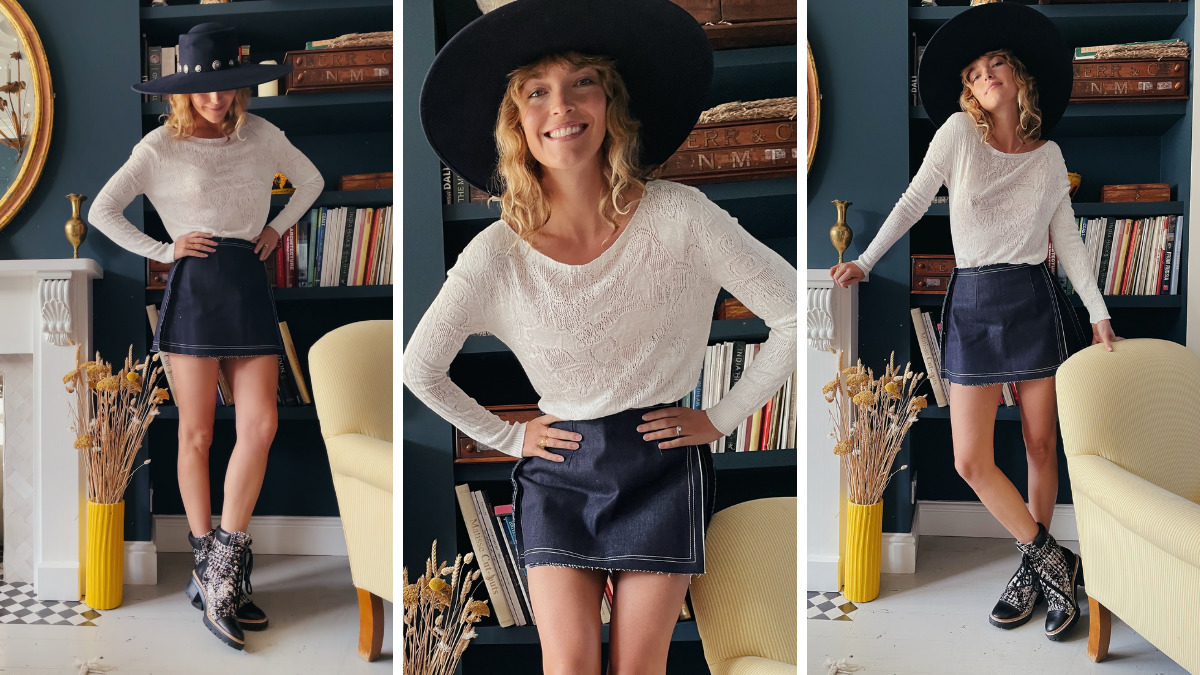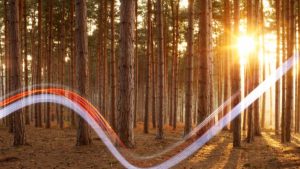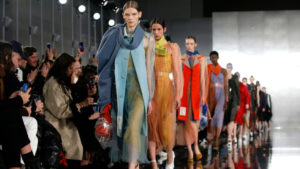Supermodel and environmental activist, Arizona Muse, models Nanollose’s tree-free garment

Nanollose has got a powerful new ally to promote its revolutionary technology converting fermented waste into environmentally friendly fibres. Image: Getty
Nanollose has got a powerful new ally to promote its revolutionary technology converting fermented waste into environmentally friendly fibres.
Australian-based biomaterial technology company Nanollose Ltd (ASX: NC6)’s tree-free rayon fibres have been featured in Canopy Planet’s “Next Generation Solutions” campaign, with legendary British-American model and environmental activist Arizona Muse modelling its first-generation viscose sweater.
Muse has opened and closed Prada fashion shows, graced the cover of glossy magazines including Vogue and modelled for the likes of other high-end fashion houses like Louis Vuitton.
Now she has modelled a sweater made from Nanollose’s first-generation Tree-Free viscose fibre, trademarked “Nullarbor”, from the Latin phrase “nulla arbor” meaning “no trees”.
Nanollose’s Nullarbor fibre is produced from fermented waste, currently coconut water, and requires no deforestation, no wood pulping process, no pesticides, and low use of energy, water and land, making it more environmentally friendly than traditional rayon.
Nanollose has since further developed its tree-free fibre technology in partnership with industry heavyweight Birla Cellulose, a business unit of Grasim Industries Ltd (NSE:GRASIM) – one of the world’s largest producers of rayon fibre with a market cap of US$15 billion. The partners are producing a second-generation tree free Nullarbor lyocell fibre as we speak, with the results of that maiden pilot spin expected in the coming weeks.
The spin will prove the viability of the lyocell technology at scale, and will provide Nanollose with sufficient quantities of the fibre to provide select fashion house partners with samples of fibre, yarn, or fabric. Some of the world’s major fashion houses will soon be able to test Nullarbor in their own systems and build capsule collections.
Perfect fit
Muse is an avid promoter of sustainable solutions to climate change, forming the charity Dirt last year to promote biodynamic farming.
The 33-year-old has amassed a following of more than 350,000 on Instagram where her profile states:
“We are in a climate crisis. I’m educating myself about the solutions available and sharing what I learn right here.”
The intricate knitted design of the sweater Muse modelled demonstrated in practice the capabilities of the Nullarbor fibre.
Fibre for the sweater was spun into yarn and made into fabric, then manufactured using standard industrial equipment.
The garment was manufactured using the latest industrial 3D sweater-knit technology, with the fibre performing extremely well and withstanding the industrial manufacturing process, demonstrating the real-world application of Nanollose’s technology.
Founder and CEO Dr Wayne Best told Stockhead their viscose rayon knitted sweater was a breakthrough for Nanollose and he was excited to see it worn by Muse.
“It was the first everyday wearable garment made from our first-generation Nullarbor fibre, which was created from waste, without cutting down trees and without the wood pulping process,” Best said.
“We are thrilled for our garment to be shown off by Arizona Muse, whose dedication to improving sustainability in the fashion industry really resonates with us at Nanollose.”
Alternative to rayon
Viscose rayon has been made for over 100 years and makes up a large part of the fashion market and even items around the home. Made from wood pulp, related agricultural products and high concentrations of chemicals it is considered a cheaper alternative to silk and is used as clothing material, in carpet and upholstery.
A new and improved version of rayon, lyocell, is still a wood-based fibre but doesn’t require the use of hazardous chemicals, instead using only a recycled solvent in a closed-loop process.
Instead of using wood pulp Nanollose’s Nullarbor fibre is produced from fermented waste, currently coconut water, making it more environmentally friendly than traditional rayon.
Second-generation Nullarbor garment
Nanollose are now in the process of creating the first wearable garment out of their second-generation Nullarbor fibre, which is significantly stronger than conventional lyocell made from trees.
The garment has been designed by a leading high-end Australian fashion designer, and is being made in Australia, with an expected unveiling in April.
This article was developed in collaboration with Nanollose, a Stockhead advertiser at the time of publishing.
This article does not constitute financial product advice. You should consider obtaining independent advice before making any financial decisions.
Related Topics
UNLOCK INSIGHTS
Discover the untold stories of emerging ASX stocks.
Daily news and expert analysis, it's free to subscribe.
By proceeding, you confirm you understand that we handle personal information in accordance with our Privacy Policy.








